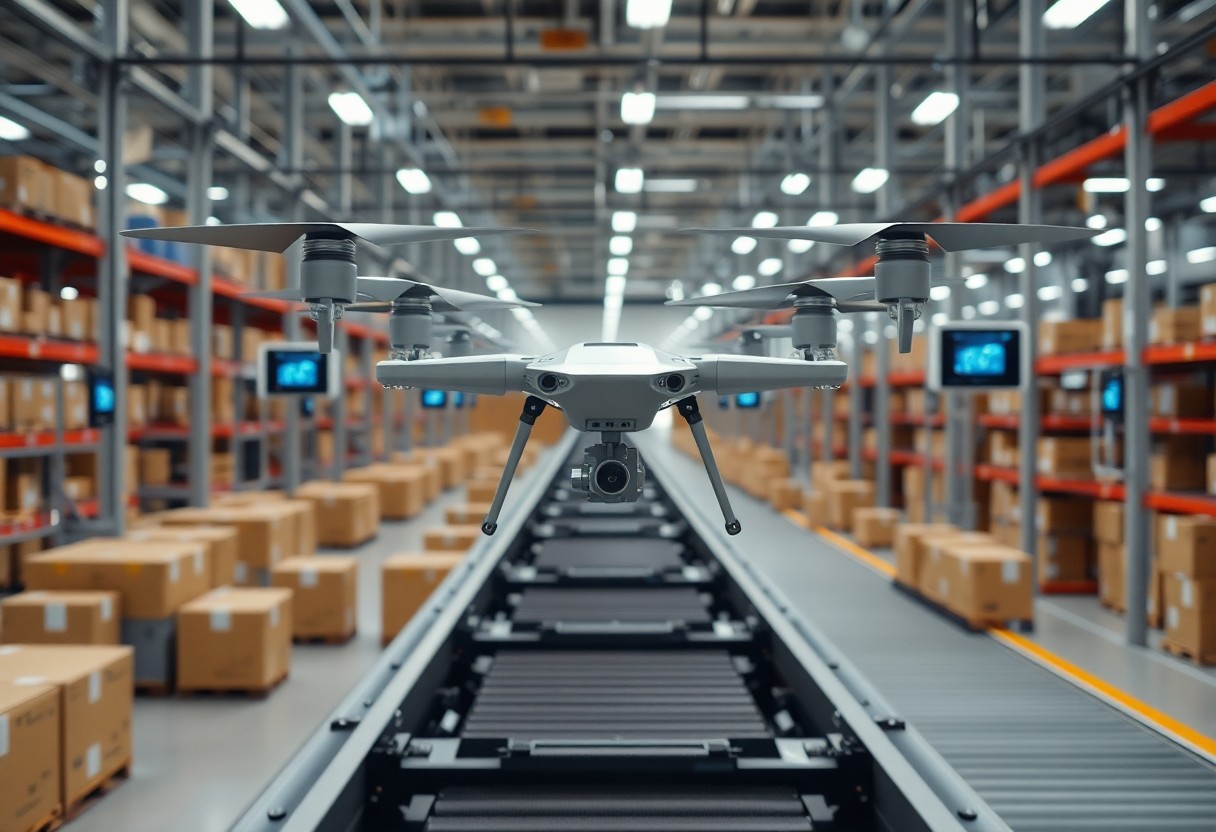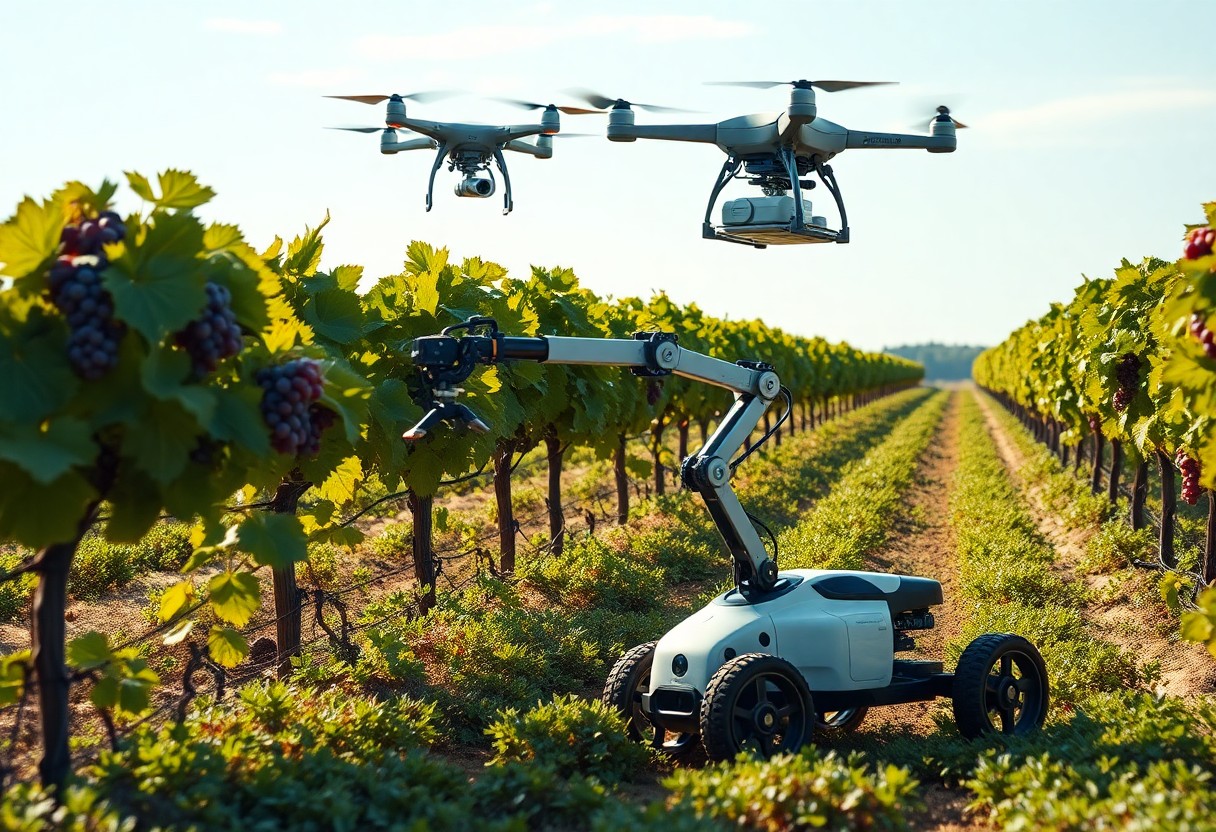It’s undeniable that the ongoing conflict in Ukraine has tested the country’s resilience in unprecedented ways. As you explore the myriad of strategies employed to ensure survival and continuity, robotic logistics emerge as an innovative and often overlooked solution. These advanced technologies are not just streamlining supply chains; they are reshaping how imperative goods and services are delivered amidst adversity. In this blog post, you will discover how robotic logistics are playing a vital role in sustaining Ukraine and supporting its efforts in overcoming challenges.
The Rise of Automated Solutions in Conflict Zones
Logistics plays a pivotal role in modern conflict zones, with automated solutions emerging as vital components of operational strategies. In Ukraine, the integration of robotic logistics has accelerated, demonstrating how technology can optimize supply chains, facilitate rapid deployment, and enhance resilience. With challenges like disrupted transport routes and resource scarcity, the automation of logistics offers a lifeline, enabling military and humanitarian efforts to adapt and respond more efficiently under pressure.
Historical Context: Automation in Warfare
Automated solutions have shaped warfare since World War II, where mechanized units transformed battle strategies. Subsequent conflicts saw the introduction of basic automation technologies, such as drones for reconnaissance and supply missions. The Vietnam War showcased how technology could directly affect logistics, paving the way for modern innovations in conflict zones that prioritize efficiency and safety while minimizing human risk.
Technological Advances Pioneering Robotic Logistics
Innovations in artificial intelligence, autonomous vehicles, and drone technology are revolutionizing logistics in conflict scenarios. For instance, Ukraine has utilized unmanned aerial vehicles (UAVs) for resupply missions, reducing the risk to personnel and ensuring timely delivery of critical supplies. Advanced algorithms now facilitate real-time tracking of shipments, optimizing routes to avoid hostile areas. The seamless integration of these technologies allows for a resilient logistics network despite rapidly changing battlefield conditions.
Robotic logistics emphasizes increased reliability and adaptability, crucial factors in a conflict zone like Ukraine. Companies and military units are now deploying ground-based autonomous vehicles capable of navigating rough terrain to deliver supplies directly to frontline troops. Drones equipped with thermal imaging navigate supply drops during nighttime operations, ensuring assistance reaches those in need while minimizing exposure to enemy fire. As these technologies continue to evolve, their impact on operational efficiency and resource management becomes increasingly evident, showcasing the untapped potential of robotics in modern warfare.
The Role of Robotics in Supply Chain Efficiency
Robotic logistics are transforming supply chain efficiency, enabling rapid response to disruptions like those seen in Ukraine. Automated systems streamline processes such as inventory management and distribution, reducing lead times significantly. For instance, autonomous drones and ground vehicles can deliver important supplies directly to frontline locations, ensuring that materials reach those who need them most without delay. Their precision and speed are important when conventional transportation routes are compromised, allowing for a more resilient logistical framework during crises.
Streamlining Operations Amidst Crisis
Robotics facilitate the organization and management of supply chains, especially during emergencies. Automated systems help in quickly assessing inventories, optimizing routes, and allocating resources where they are most needed. Innovative technology, like AI-driven predictive analytics, allows for real-time adjustments to evolving situations, ensuring that disruptions in supply lines are minimized. This efficiency not only delivers timely aid but also ensures that the local economy can stabilize and recover faster amidst ongoing turmoil.
Reducing Human Risk in High-Conflict Areas
By utilizing robotics, you significantly decrease the exposure of human personnel to dangerous environments. Autonomous drones, for instance, can navigate hazardous zones to deliver food, medical supplies, or important equipment without putting your volunteers or logistics teams at risk. As traditional supply channels become increasingly perilous, robotics emerge as a safer alternative. They perform tasks that otherwise would have required human presence, thereby preserving lives while ensuring the steady flow of crucial resources.
In the context of high-conflict areas, the ability to deploy robots for missions minimizes fatal risks. For instance, during the ongoing conflict in Ukraine, drones have successfully transported vital medical supplies to isolated regions that were previously inaccessible. These unmanned vehicles can traverse the landscape, detect landmines, and avoid enemy fire, all while you maintain a safe distance. By shifting logistical responsibilities from humans to machines, your operations can continue even in the most precarious conditions, enhancing overall safety and efficiency. This innovative approach not only responds to immediate logistical needs but also contributes to a longer-term strategy for resilience in crisis situations.

Logistics Robotics: A Financial Perspective
Robotic logistics offer significant financial advantages, particularly in regions facing extensive disruptions like Ukraine. While upfront investment can be daunting, the long-term savings from reduced labor costs and enhanced operational efficiency often surpass initial expenditures. Companies can anticipate lower overheads, minimized human error, and a streamlined supply chain, all of which contribute to an improved bottom line in turbulent times.
Cost-Benefit Analysis of Robotic Implementations
Performing a cost-benefit analysis reveals that implementing robotic systems can lead to 20-30% reductions in logistics costs over time. For instance, automating warehouse operations can decrease the need for manual labor, subsequently lowering payroll and operational expenses. Additionally, these systems can operate around the clock, increasing productivity and return on investments in critical supply chains, especially within a conflict-stricken environment.
Investing in Future-Proofing Local Economies
Investing in robotic logistics not only addresses immediate logistical challenges but also fosters long-term economic growth in local communities. As you enhance supply chain resilience through automation, you’re simultaneously cultivating a skilled workforce adept in advanced technologies. This shift boosts job opportunities in high-tech sectors while stabilizing local economies, making them less vulnerable during crises. Ultimately, these investments build a robust foundation for future economic independence and innovation.
Fostering local economies through robotic investments leads to a multiplying effect. As robotics enhances productivity, local businesses can expand their offerings and reach, generating further employment opportunities and economic stability. Areas that incorporate these technologies often see an influx of skilled labor, attracting new businesses and investments. This evolution is critical not only for immediate recovery from disruptions but also for crafting a self-sustaining economic ecosystem, capable of thriving in the face of future challenges.
Real-World Applications: Robotics in Action
Robotic logistics have emerged as indispensable tools in the challenging landscape of Ukraine. These innovations not only streamline supply chains but also enhance the efficiency of humanitarian aid distribution amidst chaos. Their integration into operational frameworks has demonstrated tangible benefits, from optimizing transportation routes to automating critical logistics tasks under extreme conditions.
Case Studies from the Frontlines
Several compelling case studies illustrate how robotic solutions are making a difference in Ukraine. Through strategic implementation, organizations have been able to quantify significant improvements in operational effectiveness and speed.
- In 2022, a fleet of drones delivered over 35 tons of medical supplies to remote frontlines within 48 hours, reducing reliance on traditional transport methods by 60%.
- Robotic ground vehicles successfully transported 10,000 food packages directly to displaced communities, reaching areas inaccessible to standard delivery trucks during military activities.
- Collaboration between robotics companies facilitated the use of automated guided vehicles to sort and manage over 1 million items at distribution centers, doubling the processing speed.
- Over 200 service robots deployed in urban environments have assisted civilian volunteers by engaging in tasks such as delivering food and important goods, increasing volunteer efficiency by 45%.
Collaborations Between Tech Companies and Local Initiatives
By partnering with local initiatives, tech companies have cultivated a robust ecosystem focused on deploying robotics for humanitarian assistance. These collaborations leverage local knowledge and networks, ensuring that the right tech solutions address specific community needs. For instance, Ukrainian startups have teamed up with international robotics firms to create custom drones tailored to deliver urgent resources. This blend of local insights and technological expertise has proven vital in navigating both logistical challenges and current conflict dynamics, resulting in innovative solutions that prioritize rapid response and community welfare.
Changing the Narrative: Robotics and Community Resilience
Robotics not only assists in logistical challenges but also plays a pivotal role in reshaping community resilience narratives in Ukraine. By enabling efficient resource distribution and support, these technologies amplify the reliance on local capabilities, which fosters a sense of empowerment among civilians. As communities adapt, they weave robotics into their everyday lives, turning them into symbols of progress rather than mere tools of mechanization.
Perceptions of Robotics Among Local Populations
Local populations often view robotics with mixed emotions, influenced by both the promise of innovation and the challenges of war. Many recognize the positive impact on daily life and logistics, while others harbor concerns about job displacement and reliance on machines. Education and outreach are pivotal in shaping a balanced understanding of the technology’s role in their future.
Building Trust and Acceptance in War-Torn Areas
Establishing trust in robotic systems requires more than just showcasing their capabilities; it involves involving the local community in the development and deployment process. Workshops that demonstrate how robotics can enhance safety and efficiency can effectively pave the way for acceptance. Partnering with local leaders also helps bridge gaps and address concerns, ensuring that the technology aligns with community needs.
Community engagement proves vital for fostering trust and acceptance of robotics in war-torn areas. Initiatives that include hands-on demonstrations and collaborative projects create opportunities for locals to experience these technologies firsthand. For instance, when local volunteers work alongside robotic logistics teams to distribute necessary supplies, it not only reinforces the technology’s utility but also cultivates a shared ownership of the advancements. This collaborative spirit enhances confidence in robotics, showcasing them as allies in rebuilding and resilience rather than threats to jobs and traditions.
To wrap up
Summing up, you can see how robotic logistics play an imperative role in supporting Ukraine’s resilience amid ongoing challenges. By automating supply chains and enhancing efficiency, these technologies not only help streamline operations but also empower local communities to rebuild and adapt. As you consider the future of logistics in conflict zones, it’s clear that robotics could indeed become unsung heroes, providing valuable resources and aiding in recovery efforts. Embracing such innovations could lead to a more resilient infrastructure for the nation.







